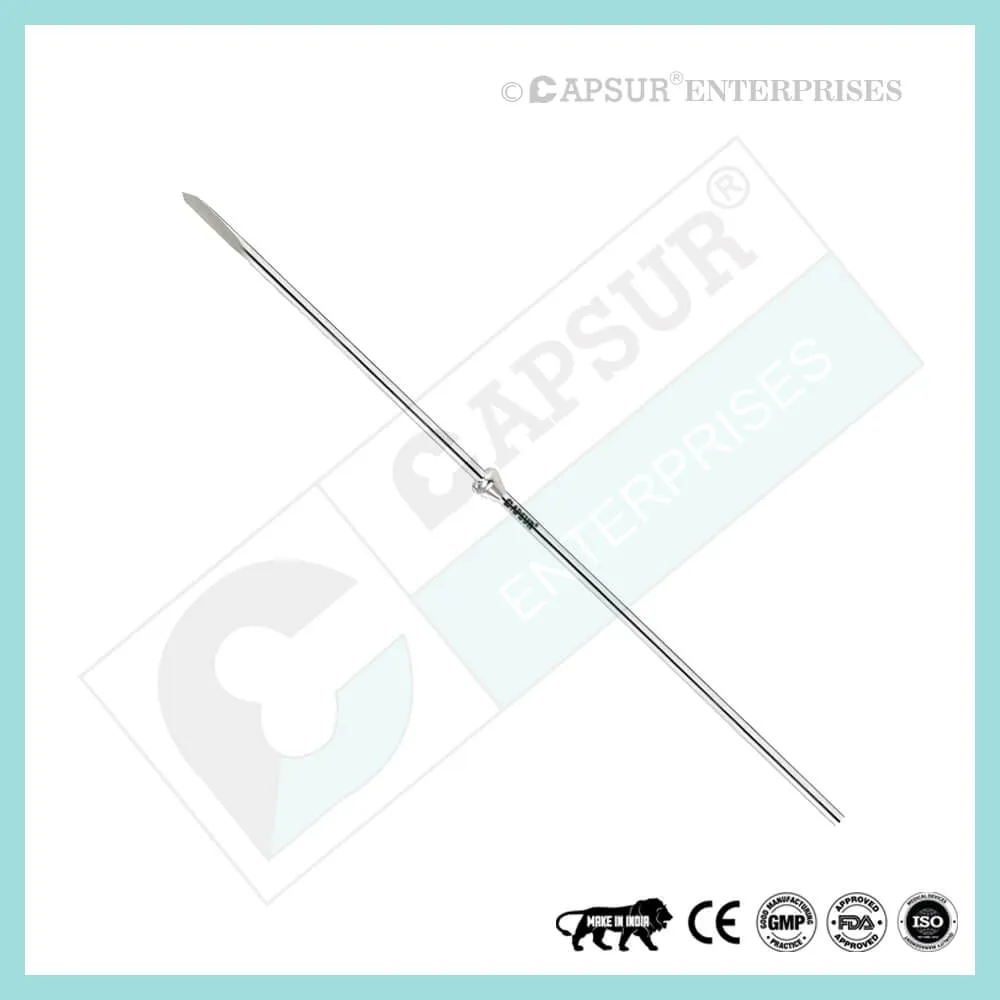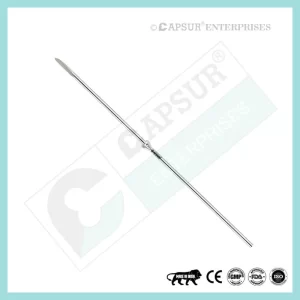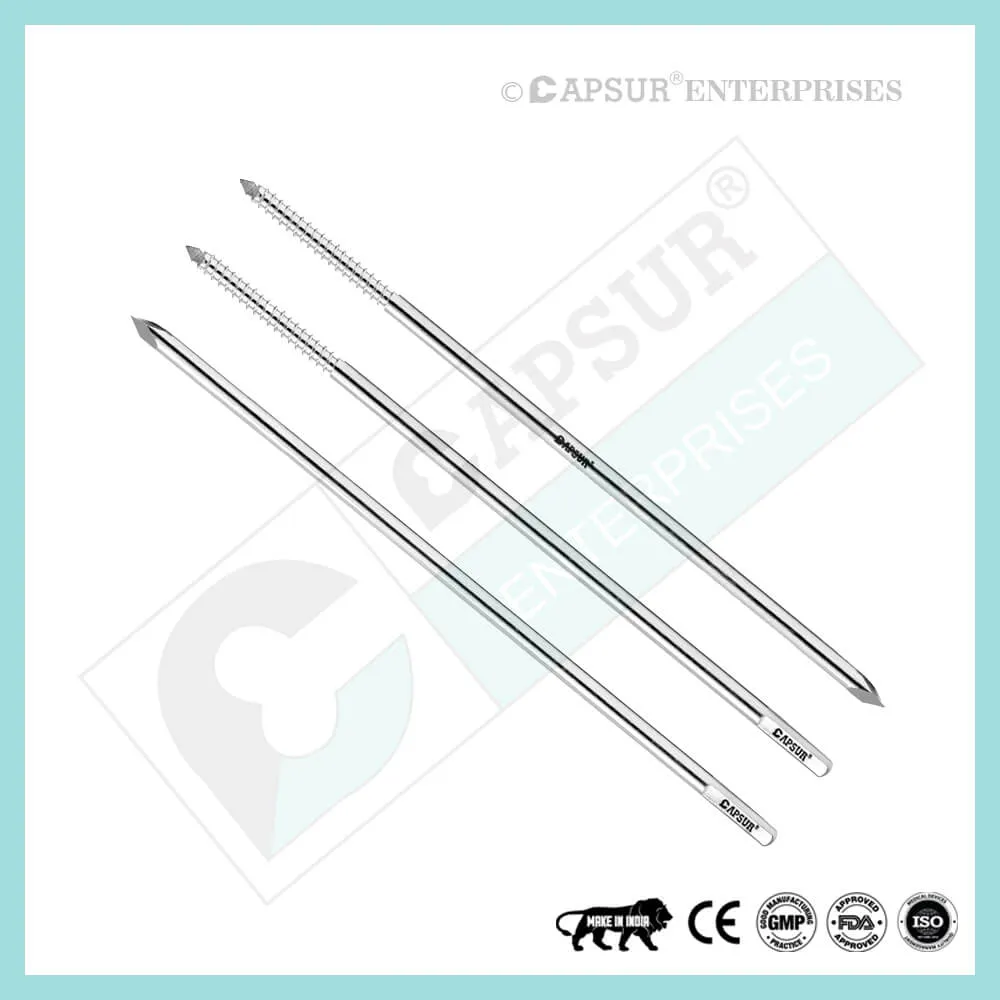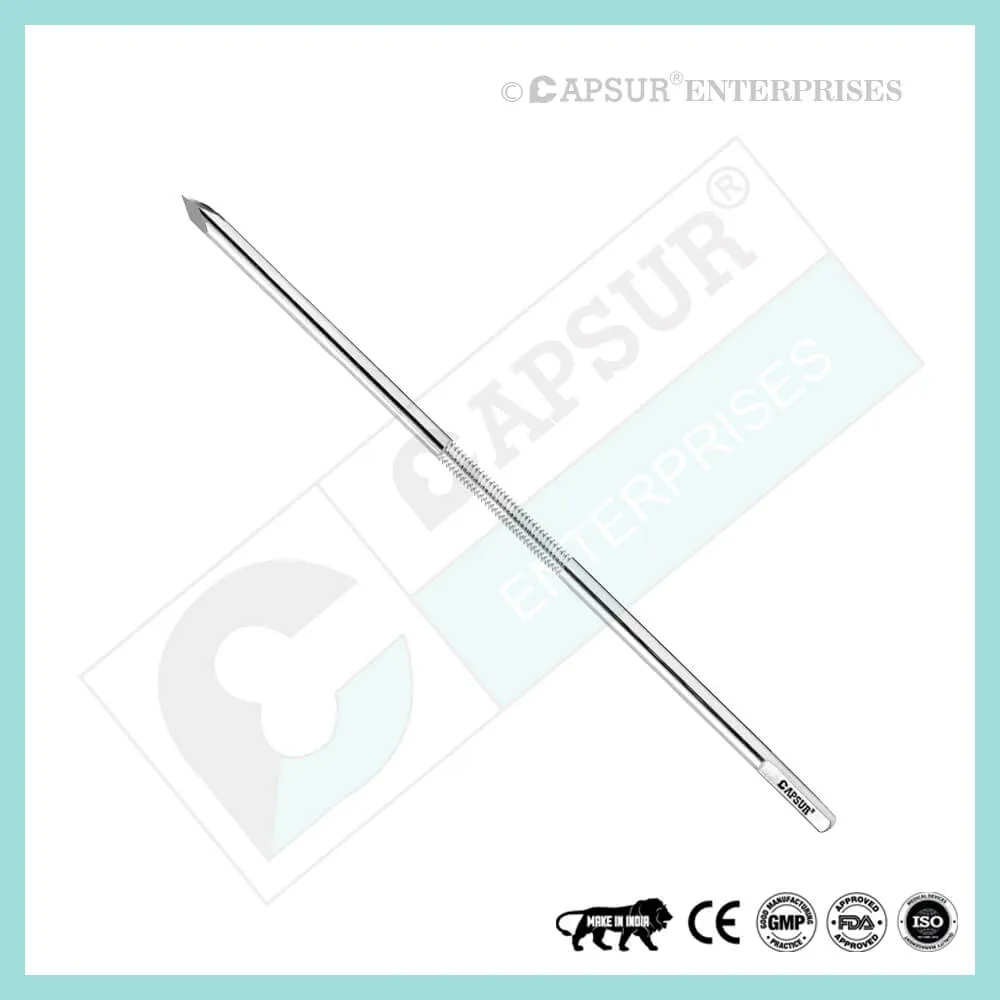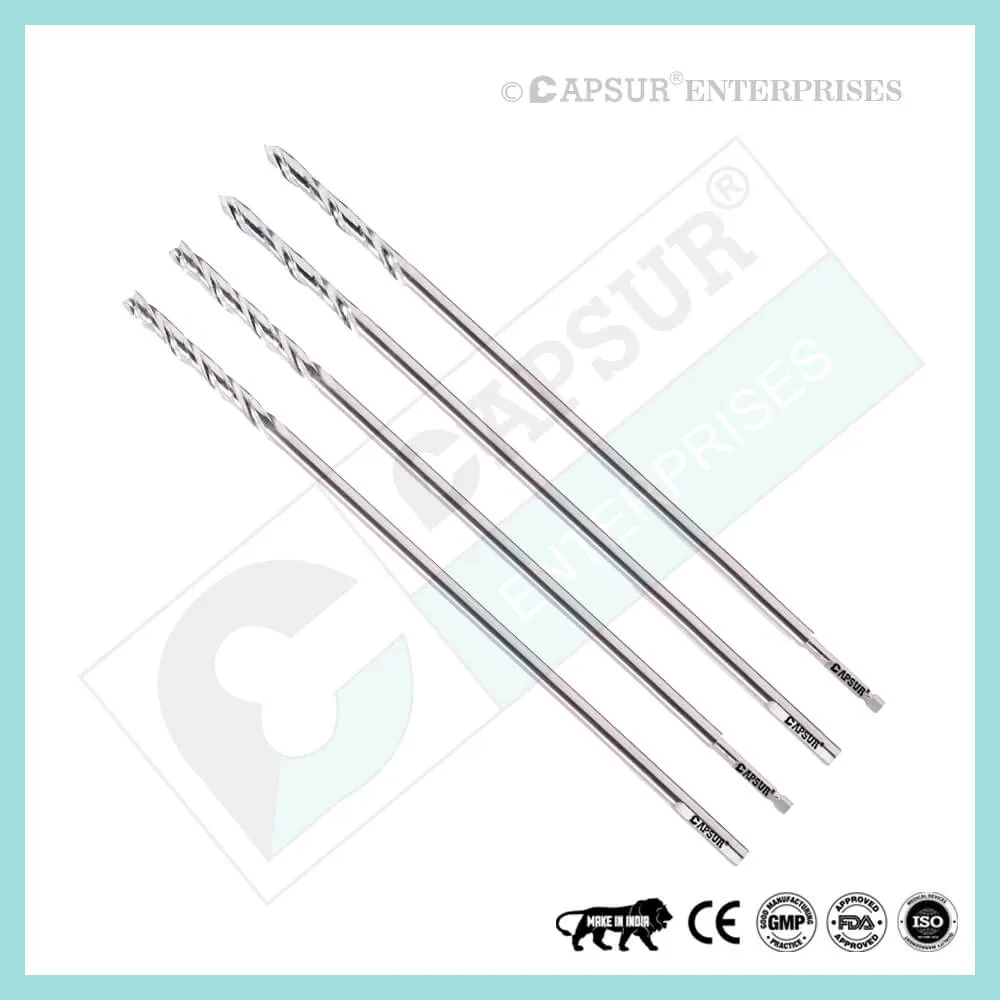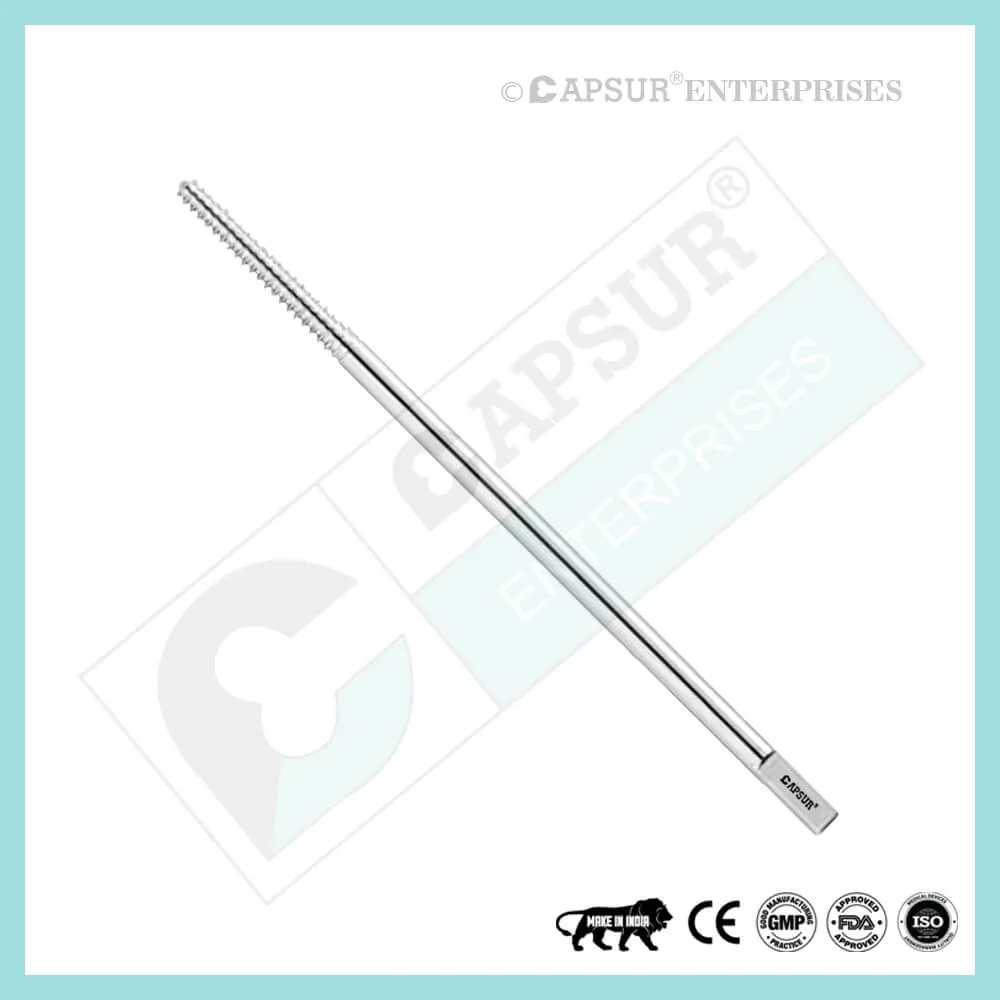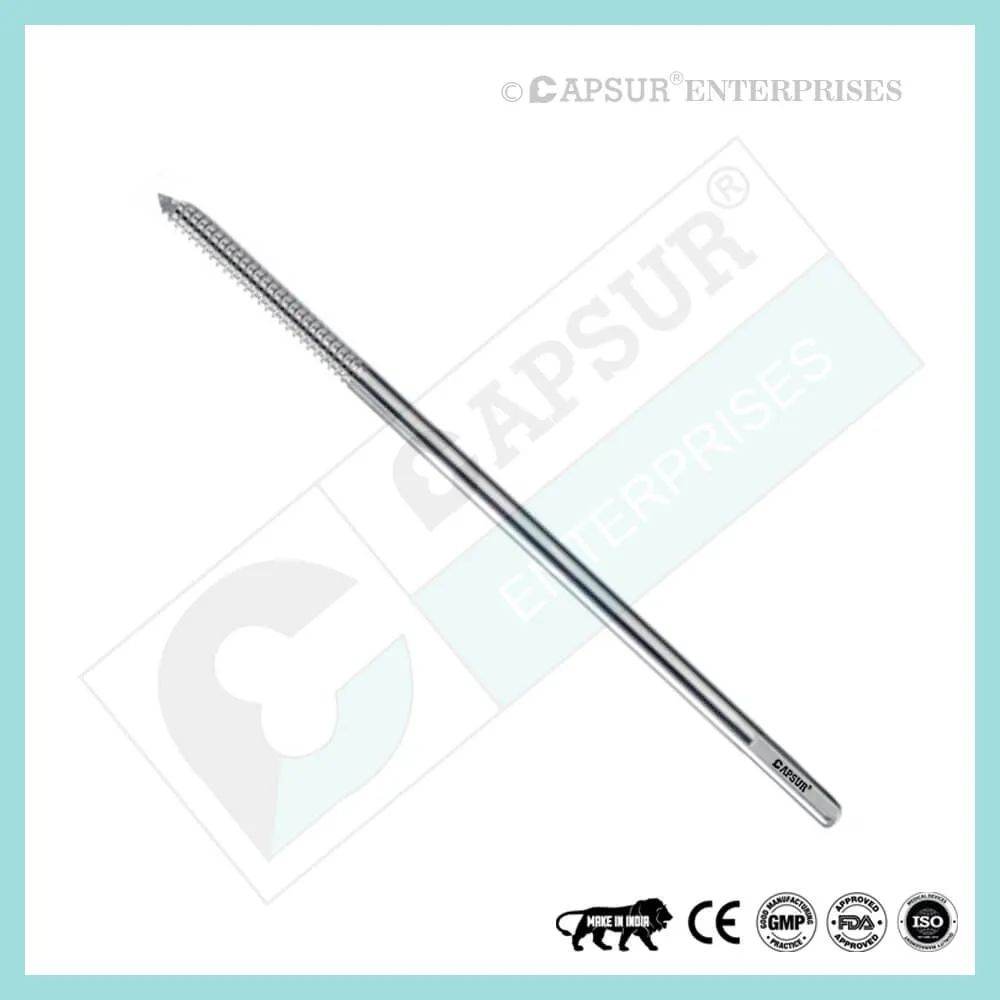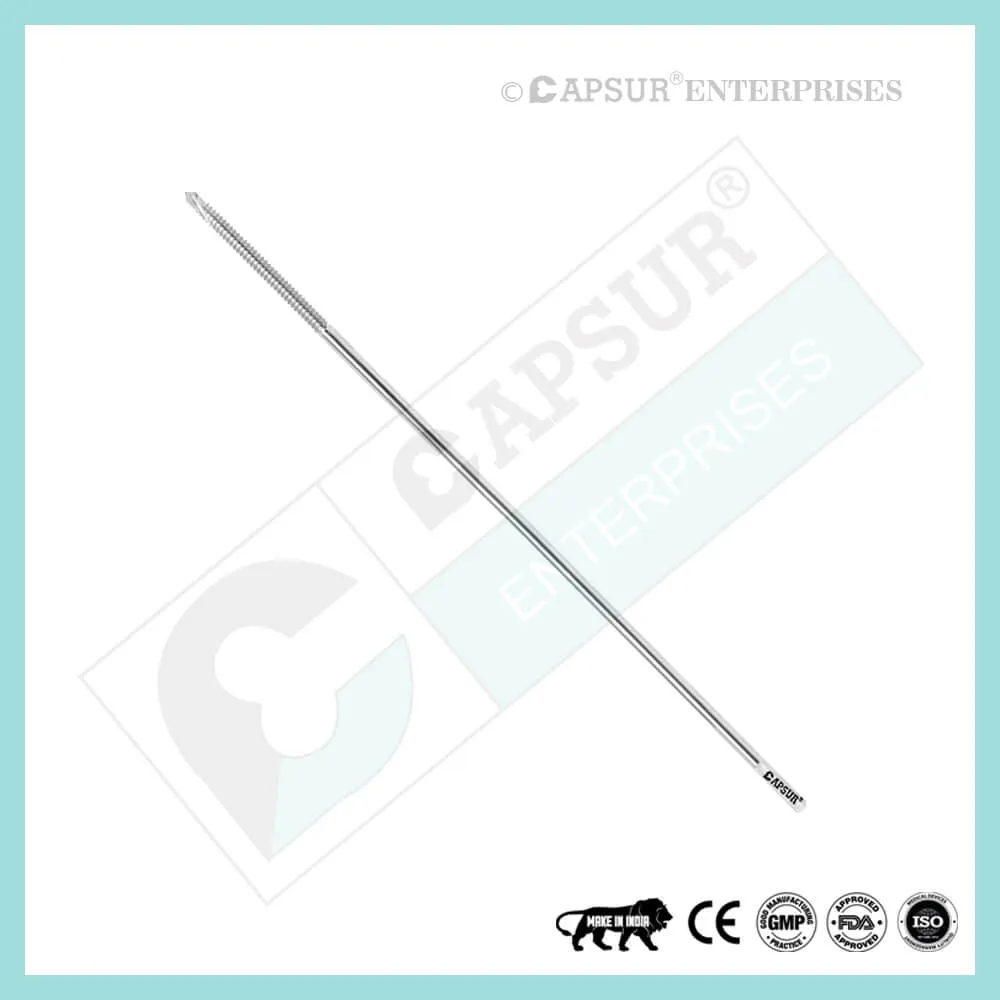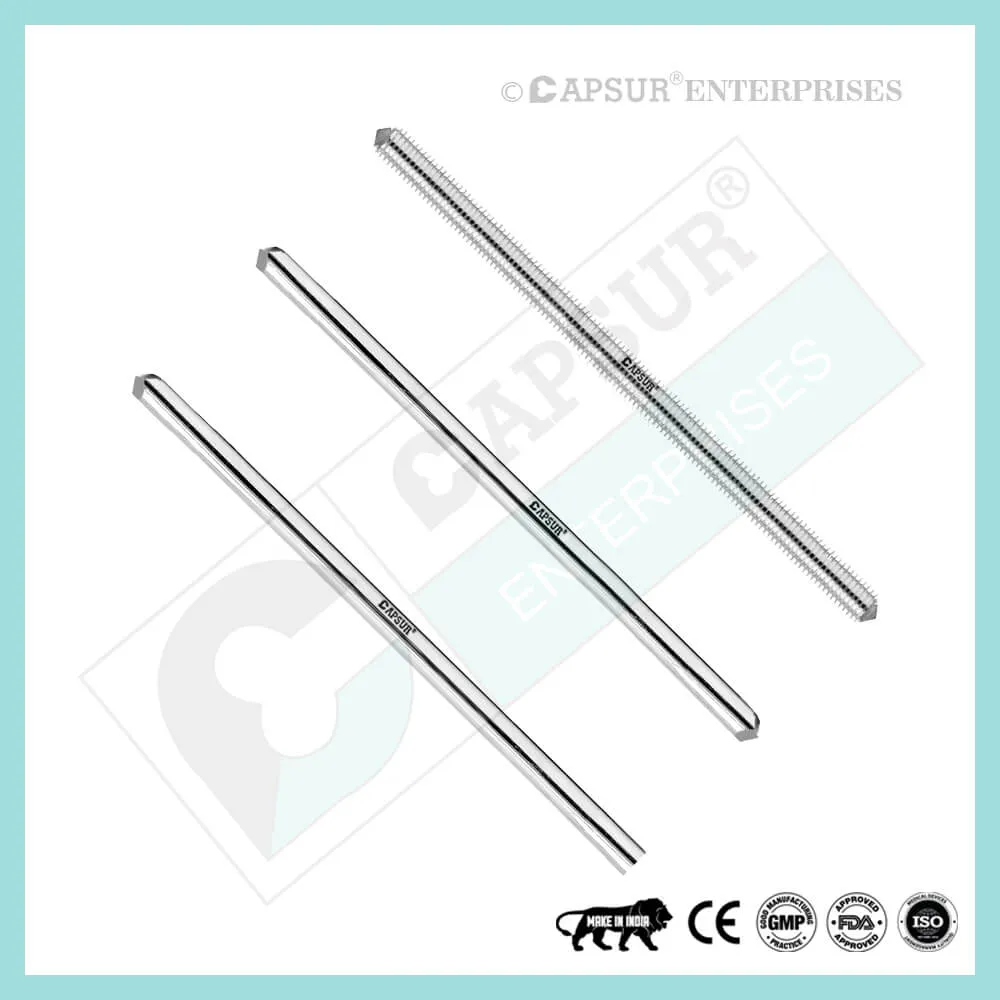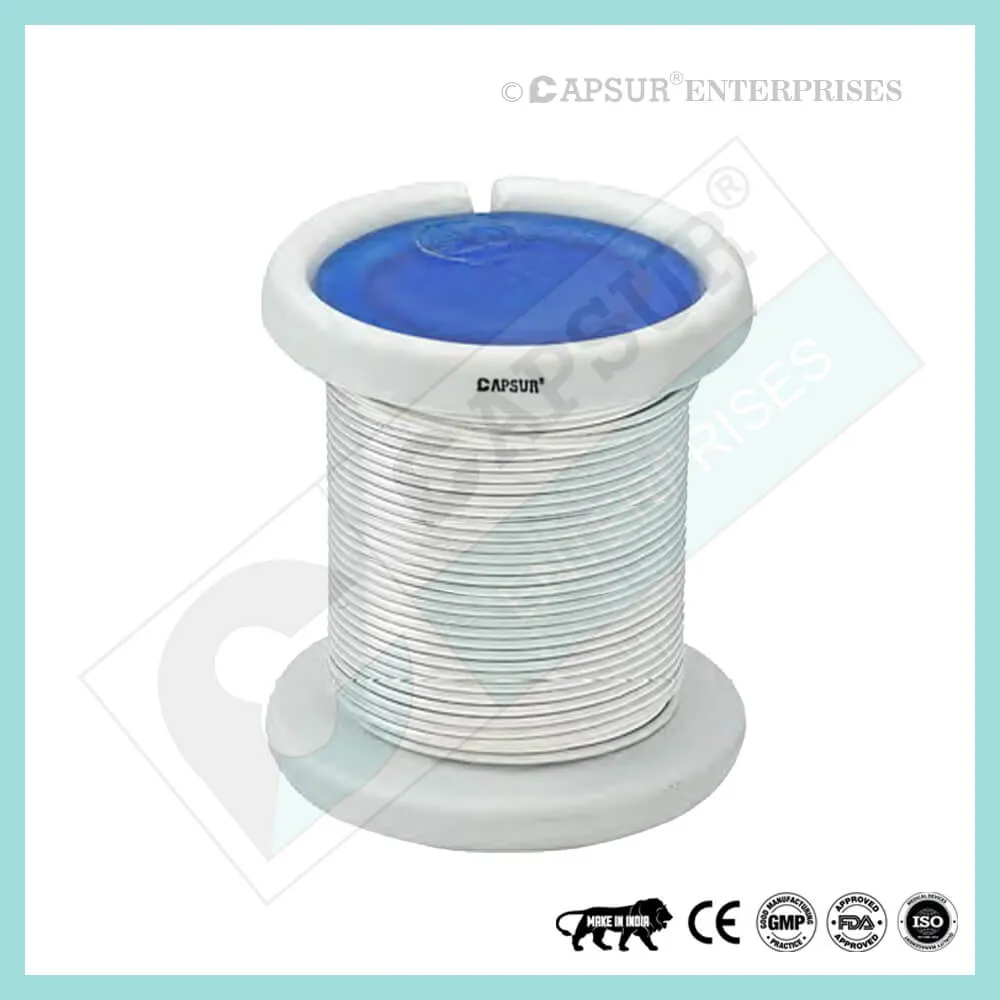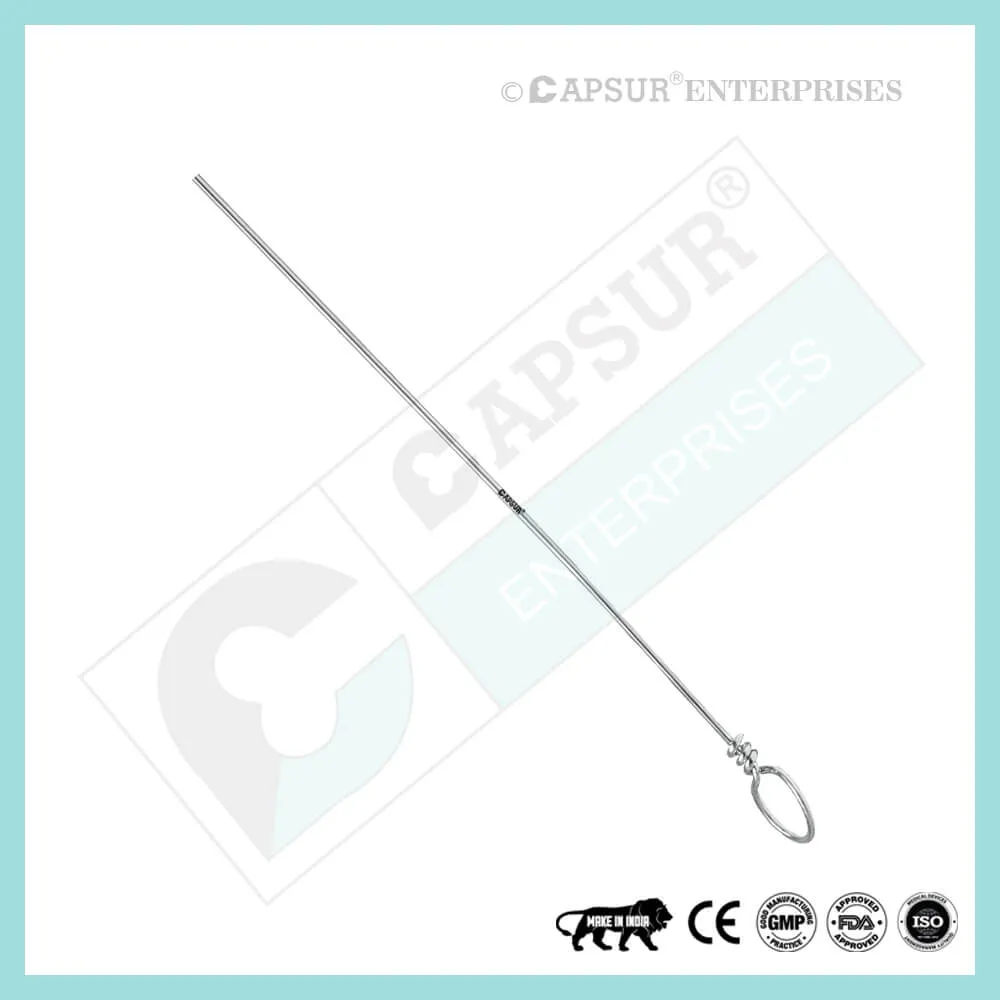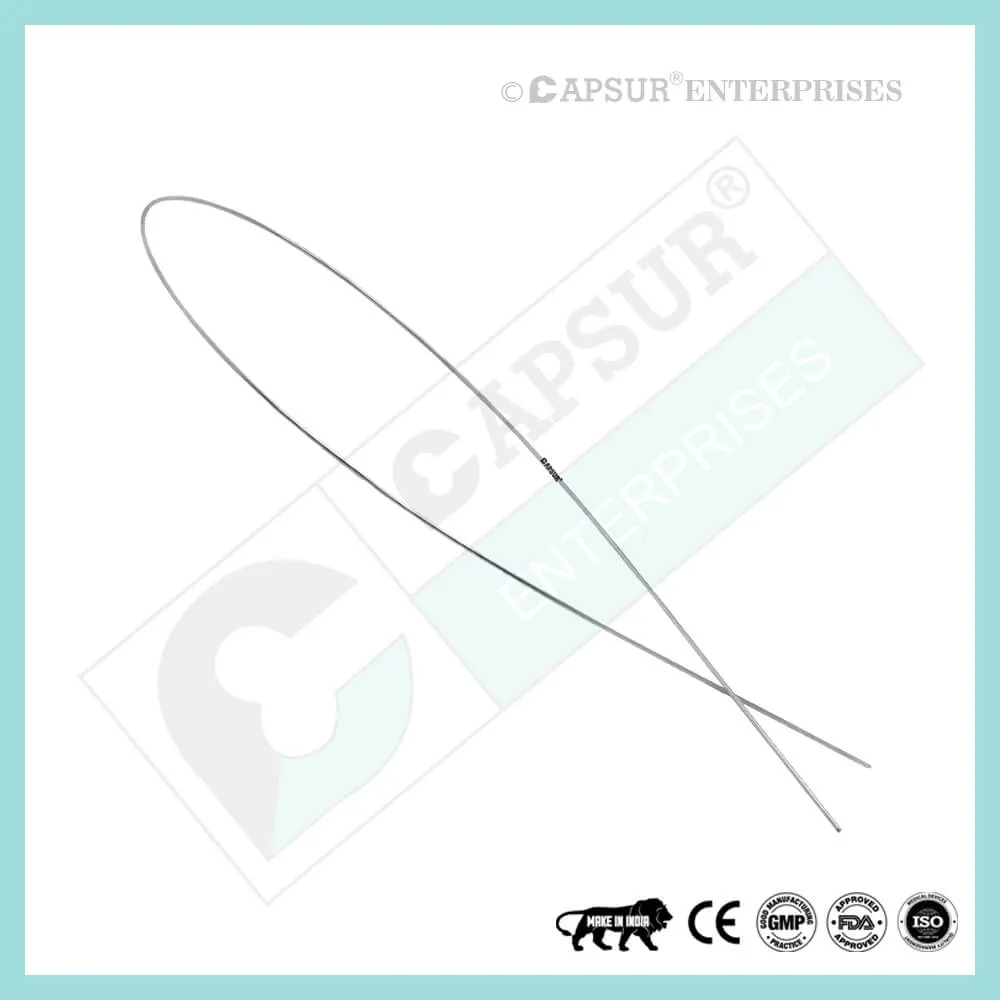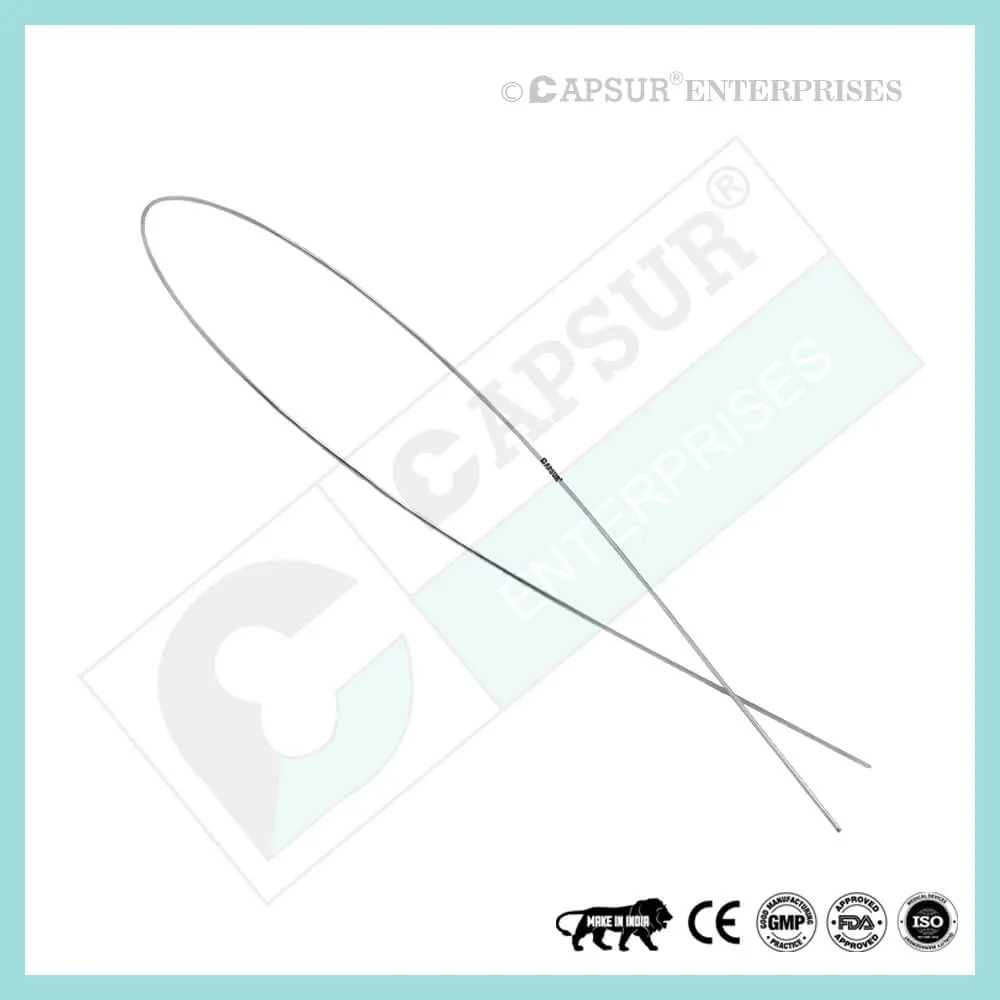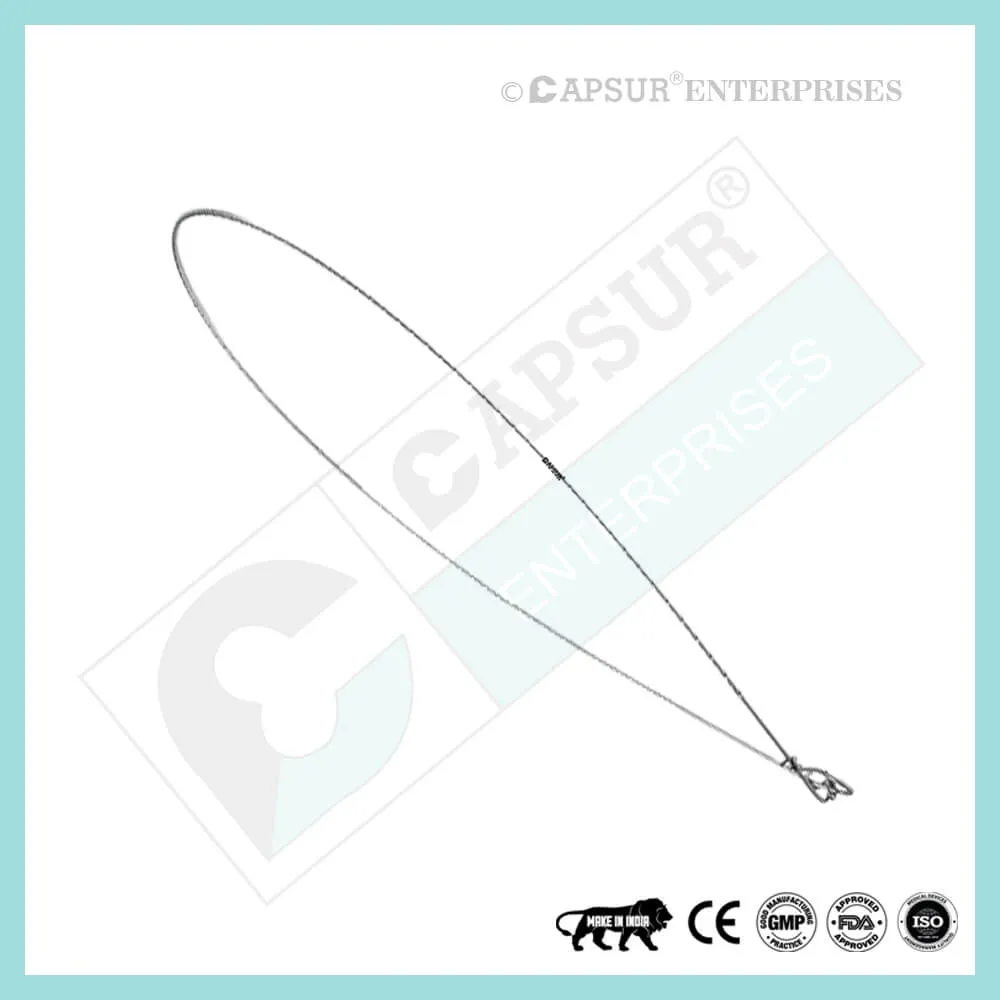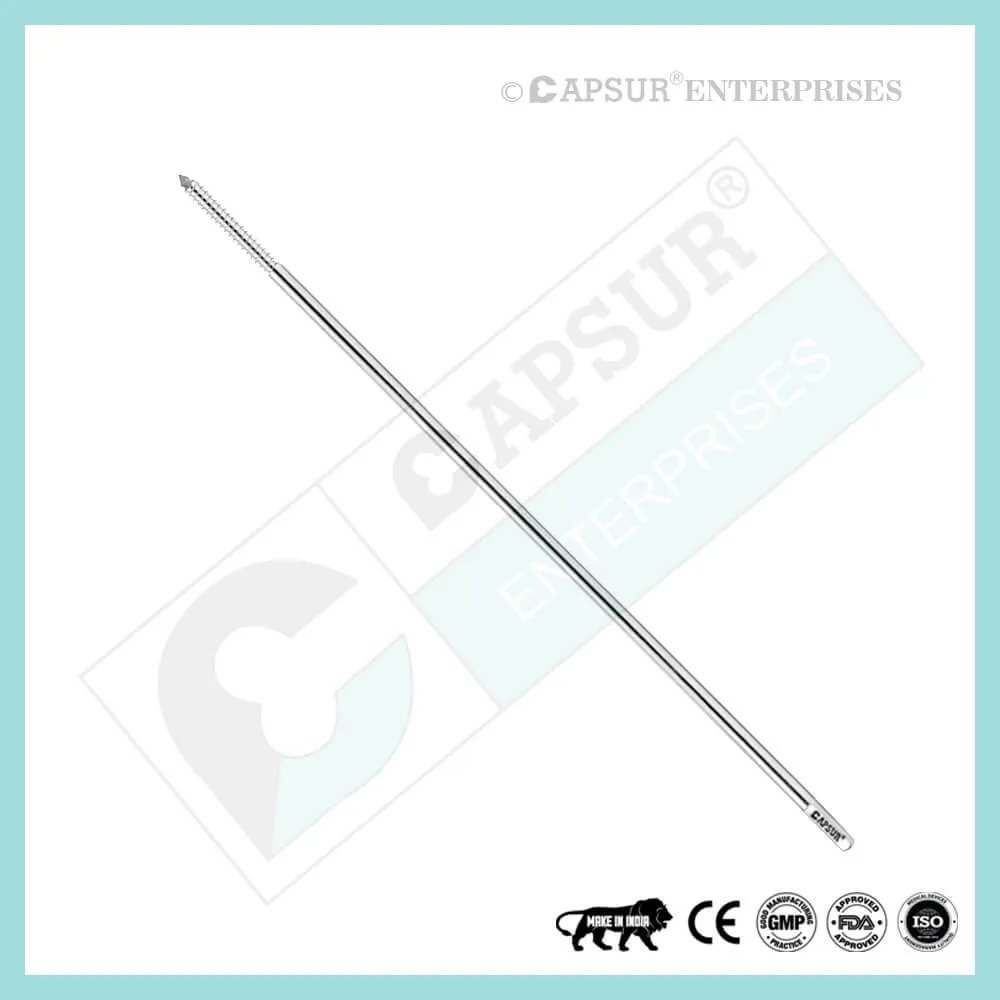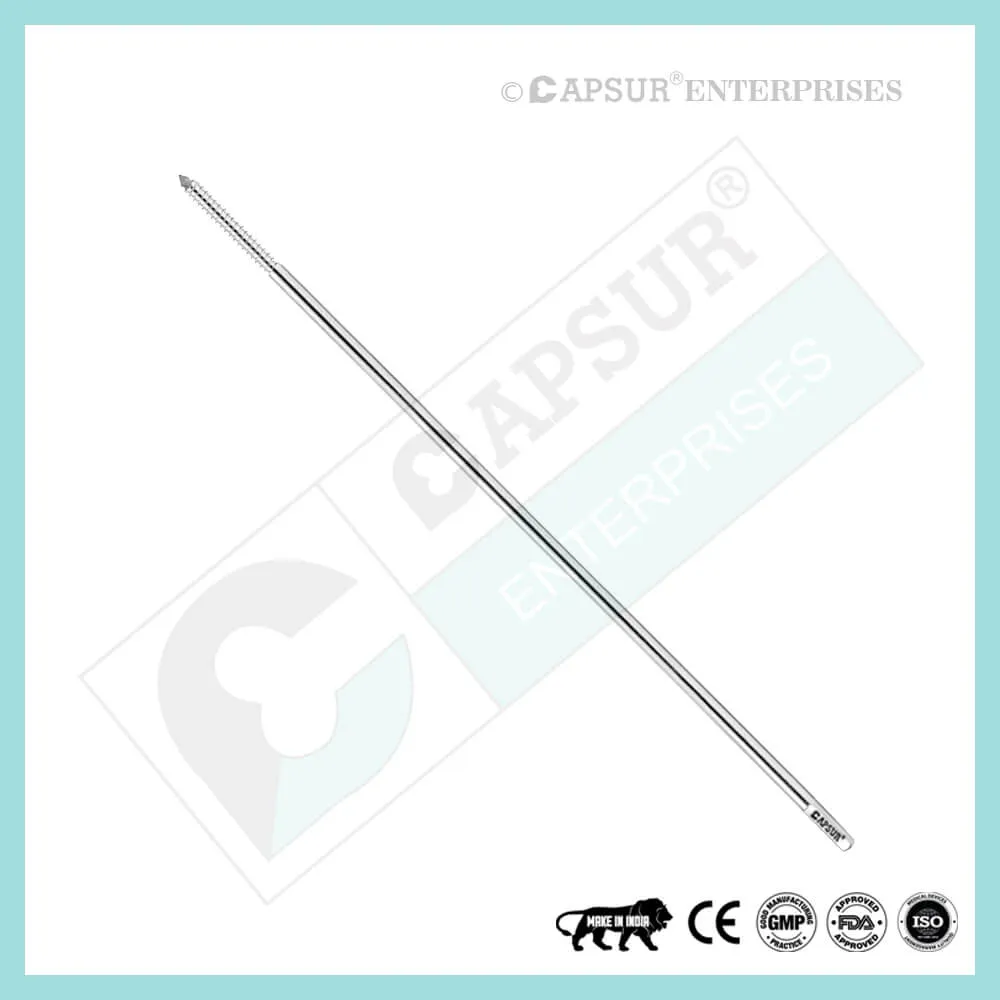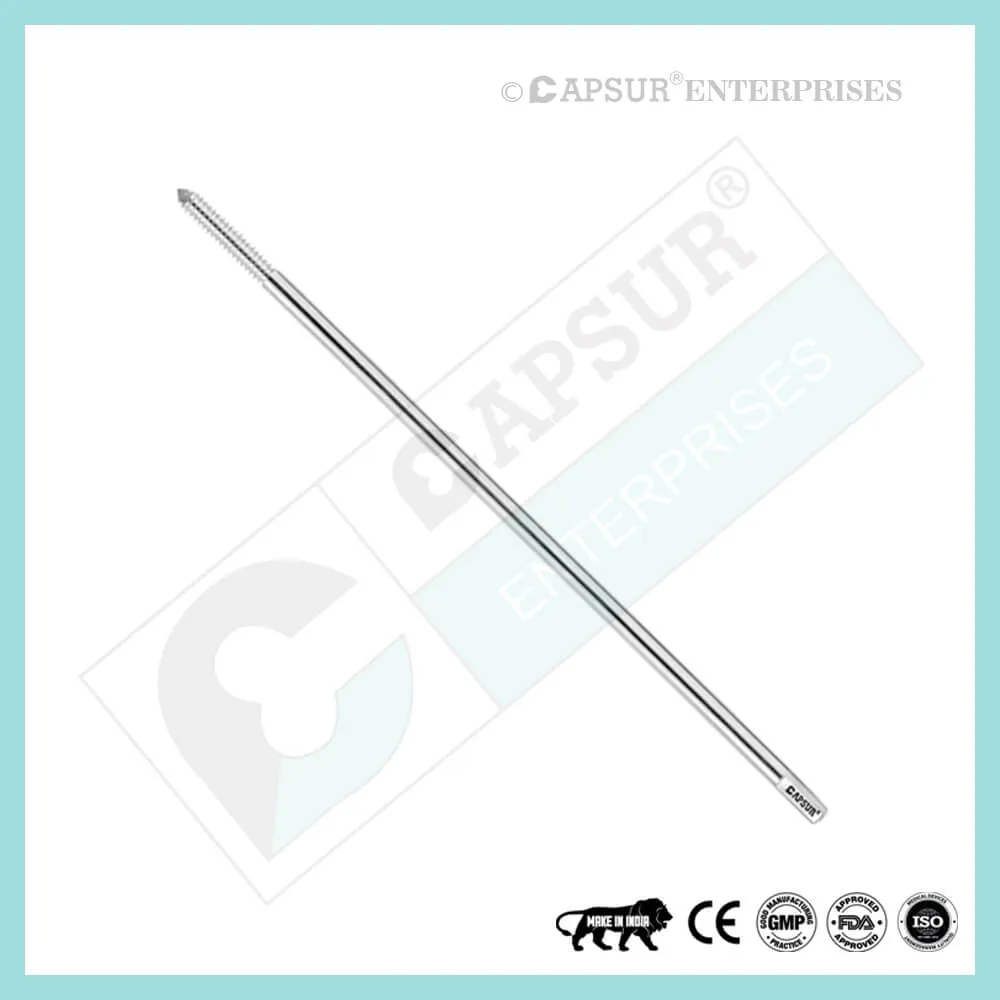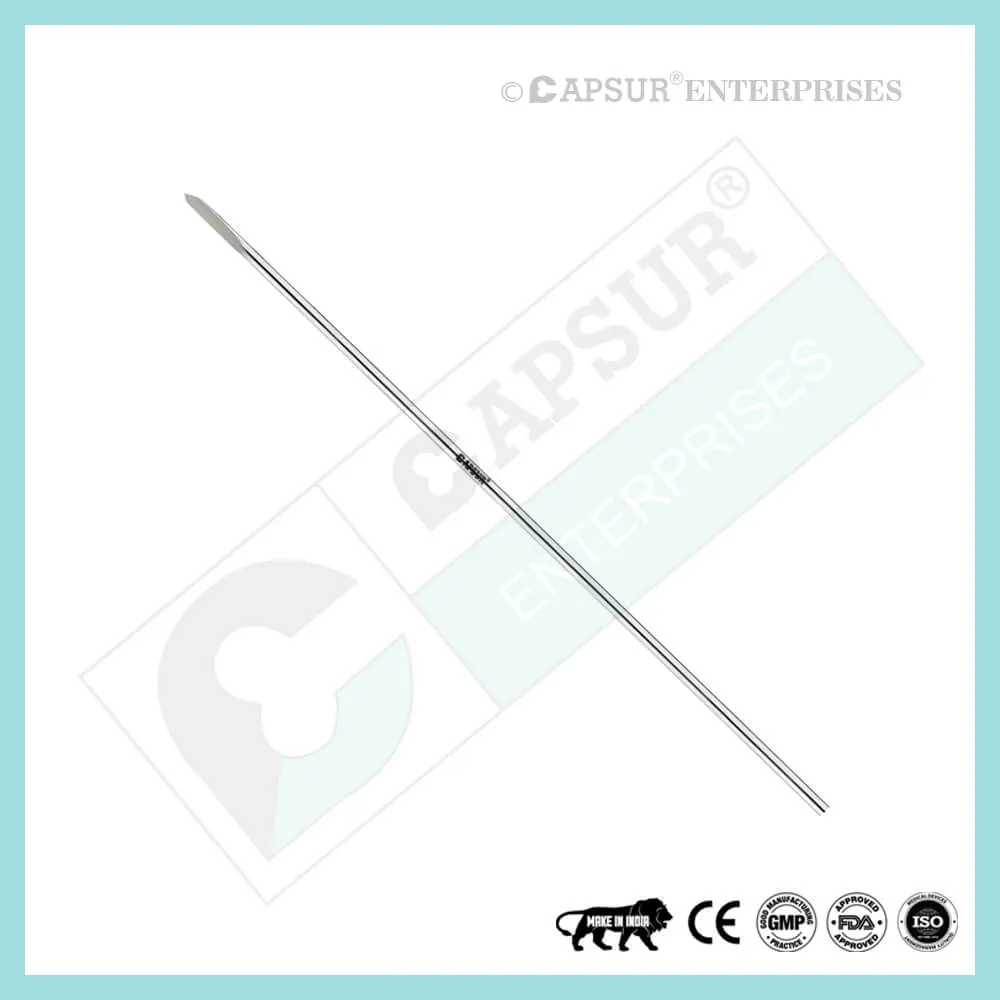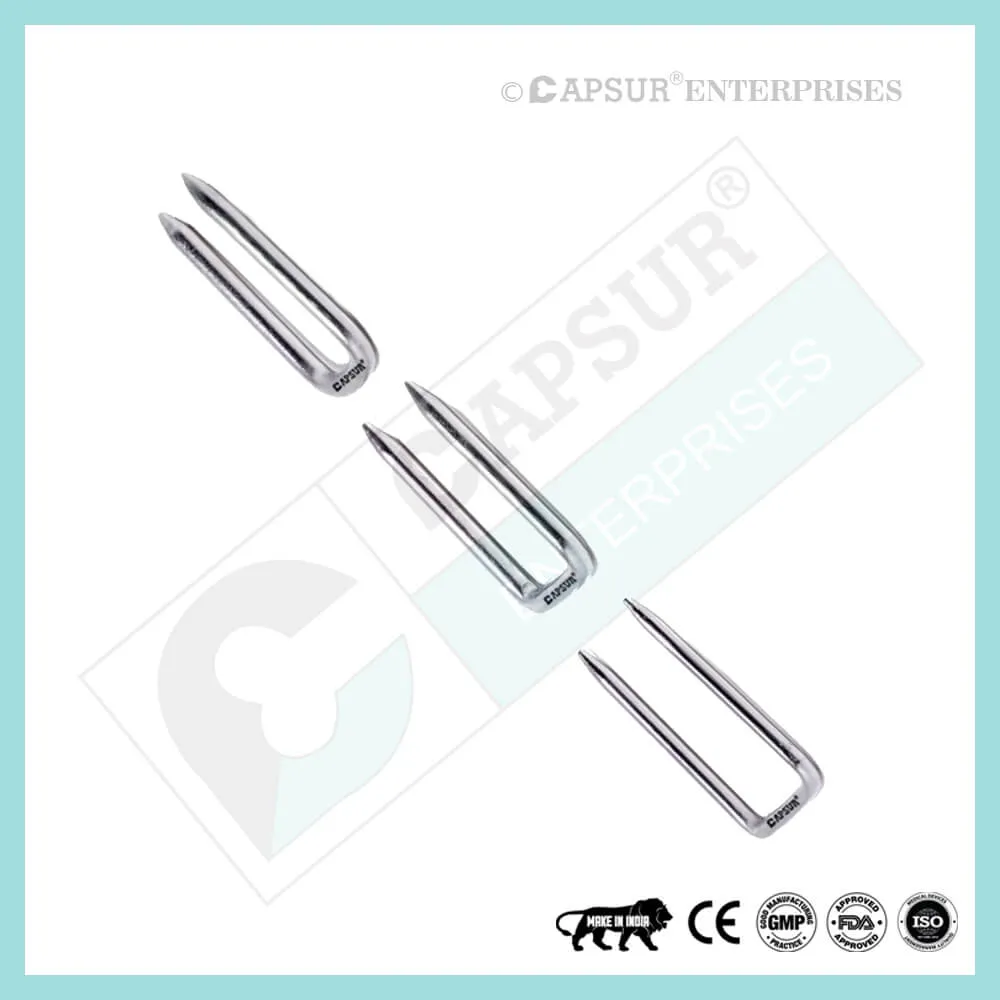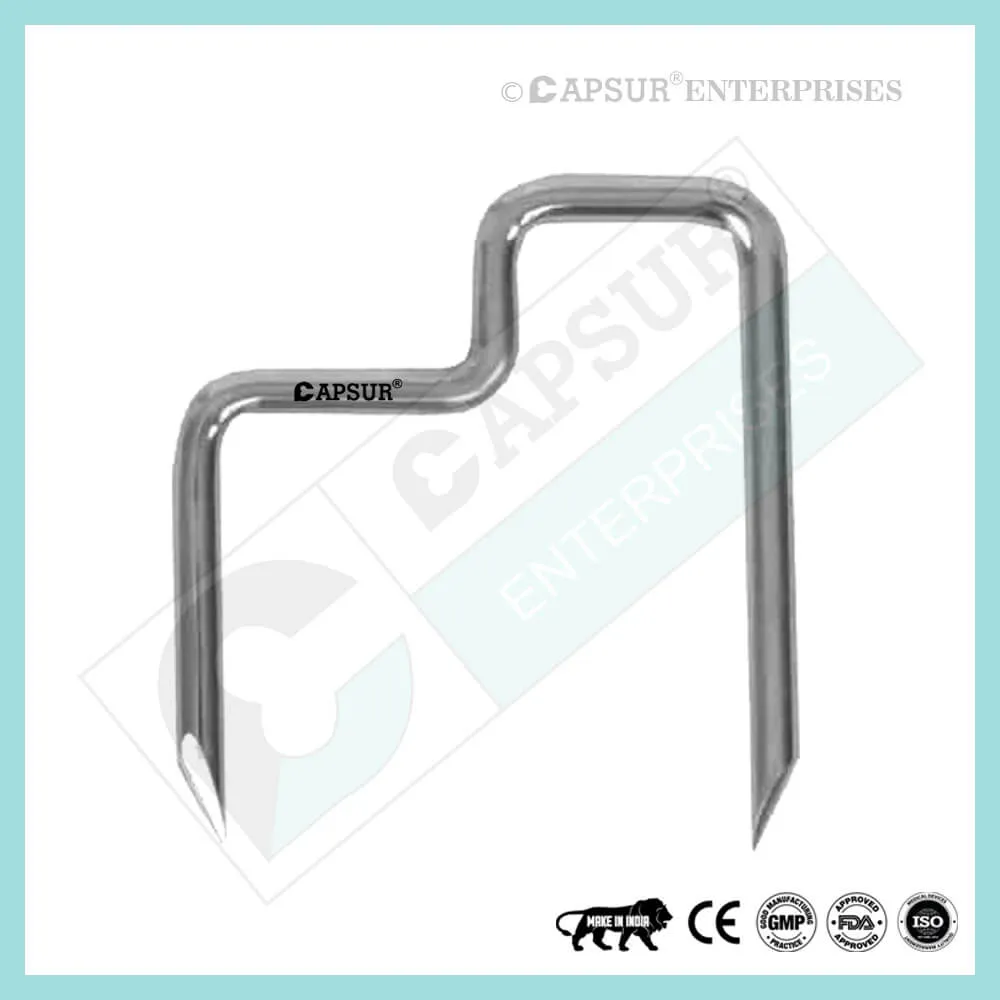Model No: 124433-A12
- Best Quality
- Affordable Pricing
- On-Time Delivery
- Customer Satisfaction
Specification of Schanz Screw (Schanz Pin)
Comminuted or fractures close to articular surfaces are treated with Ilizarov Olive Wire fixators. They are also frequently used to treat limb deformities (by distraction osteogenesis), post-traumatic residual misalignment, and non-unions.The pre-tensioned, thin Ilizarov Olive Wire used in the Ilizarov method of fracture fixation transfixes the bone and is supported by spherical rings that are joined by stiff longitudinal bars. Ilizarov fixators differ from other fixation techniques by having non-linear stiffness in the axial direction. The pre-tensioned Ilizarov Olive Wire behave like beams and cables at the same time, but as the load increases, the cable behavior takes precedence, and the load carrying capacity of the wires varies nonlinearly as they sag. As a result, a non-linear load-deflection curve is produced, which represents a geometrically non-linear response.
Other Important Info of Schanz Screw (Schanz Pin)
Ilizarov Olive Wire Sizes
To ensure the highest quality, our Ilizarov Olive Wires are made from the best SS 316L material. Ilizarov Olive Wire comes in two different varieties. Ilizarov olive wire bayonet point number one and trocar point number two. Ilizarov Olive Wires come in various sizes, including:
- Ilizarov Olive Wire Bayonet Point, 1.5 and 1.8 mm diameter and 400 mm length
- Ilizarov Olive Wire Trocar Point, 1.5 and 1.8 mm diameter and 400 mm length
For the external fixation of bones in the management of nonunions and bone defects as well as in limb lengthening, which may necessitate protracted treatment, Ilizarov Olive Wire offers many advantages. The ability of these wires to stabilize the bone fragments depends on how they are tensioned. These wires deflect and get stiffer when they are subjected to compression or distraction loads.
Ilizarov Olive Wire tensioning and holding methods: a biomechanical study
Goal: To look into and contrast two distinct tensioning and holding techniques for Ilizarov Olive Wire.
The vertical Hounsfield test machine H25KS, a stress/strain instrument with a load cell connected to a computer program, was used in this study as the method. The department’s current mechanical tensioners were evaluated first. Second, Ilizarov’s method of twisting the three different wire-holding bolt designs to achieve wire tension was evaluated. These bolts are referred to as “cannulated,” “slotted,” and “Russian” (which have a slot down one side and a hexagonal head).
Results: With a maximum producible tension of 1330N, the mechanical tensioners were found to be accurate but ineffective. The Russian bolts were the most efficient at producing tension, resulting in mean wire tensions of 785N at 45 degrees, 1200N at 90 degrees, and 1695N at 135 degrees. The wires would frequently break at a 90-degree twist from the cannulated and slotted bolts.
Conclusion: The results showed two practical approaches. When compared to the straightforward twisting of the wire holding bolts, which produced equivalent tensions with ease and are capable of producing greater wire tensions, the present tensioners were found to be inefficient. It is advised to use Russian bolts when wire tension is produced by twisting the bolts.
Ilizarov Olive Wire Risk Factor
When assessing the prognosis in each case, contraindications—which may be partial or complete—must be taken into account. Under the following circumstances, alternative management strategies may need to be taken into account:
- infections that are systemic or local, acute or chronic.
- either localized, systemic, or chronic inflammation.
- serve as a dangerous vascular, nervous, or muscular disease.
- Bone defects that would prevent the implant from being properly anchored.
- All associated illnesses that might jeopardize the implant’s success and functionality.
Warnings and Precautionary for Ilizarov Olive Wire
The surgeon and support staff should read the safety instructions in this document as well as any product-specific information in the product description, surgical techniques, and/or brochures before using Ilizarov Olive Wire.
Ilizarov Olive Wire is designed, built, and produced with the utmost care using medical-grade materials. If used properly, these high-quality Ilizarov Olive Wire ensure the best working outcomes. As a result, the usage guidelines and safety advice below must be followed.
Ilizarov Olive Wire should only be used as directed in order to avoid injury to the operator, patients, or other people as well as tissue damage, premature wear, and instrument destruction.
The operating surgeon must actively participate in the medical care of their patients. The surgeon must have a complete understanding of the instruments, their limitations, and the surgical procedure. The surgeon and the surgical team are responsible for exercising caution in the selection and use of surgical instruments. Before using Ilizarov Olive Wire, adequate surgical training should be obtained.
Factors that could harm the operation’s success include:
- allergies to materials implanted.
- regional bone tumors.
- osteomalacia or osteoporosis.
- metabolic disturbances and systemic disease.
- drug and alcohol abuse.
- Excessive shock-producing physical activity that exposes the implant to blows and/or heavy loads.
- Patients who lack the mental capacity to comprehend and follow instructions from a doctor.
- Unhealthy overall.
- Potential Negative Effects
The most frequent side effects following implantation are as follows:
- Implant loosening that may be caused by the implant reacting with the tissue or by the fixation site being loaded repeatedly.
- the two stages of infection.
- additional bone fracture brought on by abnormal stress or weakened bone structure.
- a hematoma or pressure-related pressure that causes temporary or permanent neural damage.
- Hematomas from wounds and slow wound healing.
- Venous thrombosis, pulmonary embolism, and cardiac arrest are examples of vascular disease.
- heterotopically ossifying.
- discomfort and pain brought on by the implant.
- Implant mechanical failure, such as bending, loosening, or breakage.
- Implant migration leading to injury.
Preoperative Planning for Ilizarov Olive Wire
After a comprehensive clinical evaluation of the patient, the operating plan is carried out. X-rays are also required to provide a clear indication of the bony anatomy and associated deformities. The entire set of implants must be on hand, along with the appropriate implantation tools, at the time of the procedure.
The patient should be informed of any potential dangers and issues that could arise from using Ilizarov olive wire, according to the clinician. Whether the patient is allergic to any of the implant materials must be ascertained prior to surgery. Additionally, it’s important to let the patient know that there’s no way to guarantee how well the device will work because problems could shorten its lifespan.
Ilizarov Olive Wire Precautions
During reprocessing, verify that the instruments are functional and look for wear. Before using, replace any worn-out or broken instruments.
It is advised to use the tools designated for this screw.
Use caution when handling equipment, and put used bone-cutting tools in a sharps container.
Always use suction and irrigation to remove any debris that may be produced during implantation or removal.
Ilizarov Olive Wire Warnings
When put through excessive force, Ilizarov olive wire has the potential to break while in use. We advise that the broken part be removed whenever possible and practical for the particular patient, though the surgeon will ultimately decide whether to do so based on the risk involved. Be aware that implants lack the natural bone’s strength. Significant loads may cause implants to fail.
The user’s glove or skin may be pinched or torn by the sharp edges or moving joints of some instruments, screws, and cut plates.
Be sure to get rid of any fragments that weren’t fixed during surgery.
While the surgeon will ultimately decide whether to remove the implant, we advise that fixation devices be taken out as soon as it is safe and practical for the specific patient and after their purpose as a healing aid has been fulfilled. To prevent refracture, implant removal should be followed by adequate post-operative care.
Ilizarov Olive Wire General Adverse Events
There are risks, side effects, and adverse events associated with all major surgical procedures. While there are many possible reactions, the following are some of the most frequent ones: issues related to anesthesia and patient positioning (such as nausea, vomiting, dental injuries, neurological impairments, etc.), thrombosis, embolism, infection, damage to nerve and/or tooth roots or other critical structures, such as blood vessels, excessive bleeding, damage to soft tissues, including swelling, abnormal scar formation, functional impairment of the musculoskeletal system, and pain.
| Ilizarov Olive Wire Bayonet Pointa |
|---|


